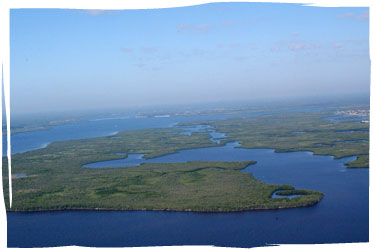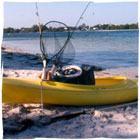Charlotte Harbor

This is where the Peace River meets the Gulf of Mexico. Along with being a diverse ecosystem, Charlotte harbor provides $4.5 billion in tourism and $38 million to Charlotte and Lee Counties.
The real risk of phosphate mining is in what we don't know. We don't know what the "grand plan" for mining in the Peace River watershed is now or in the future. We don't know if reclamation will restore the ecosystem after mining. We don't know what the cumulative effects of all those mines will be, and we don't even know if the industry has enough money to cover the costs of clean-up after an accident or catastrophic spill.
We do know this: It's always the plants, animals and people in downstream communities that pay the ultimate price.
Scientists agree that water flow to the Peace River has dramatically decreased in the last 40 years. Until there is a management plan to protect water supplies, we cannot afford to allow phosphate mining to continue to reduce our water flows. Less flow to the river means less water available for the cities and counties serving tens of thousands of people. It also means less water downstream for the Charlotte Harbor estuary.
One way to measure downstream consequences is to identify what's missing from the ecosystem. The living system depends on the smallest creatures to feed the larger ones. When the smaller creatures are missing, it affects the food supply and therefore the populations of the larger creatures.

The downstream consequences are like dominoes. The system is "tripped" in the uppermost reaches and results are felt all the way downstream by the plants, animals and people that depend on the natural system for economic and environmental enjoyment.
For example, blue crab feed on worms and other small prey. Those small prey species need a certain salinity range to live and grow. When levels are altered due to lack of freshwater, their populations are reduced. This means less food for the blue crab, which leads to less food for the goliath grouper and tarpon. Eventually an entire ecosystem is affected. At the top of the chain are the people that rely on the tourism and commercial fishing to survive.
There's too much at risk to allow phosphate mining companies to continue as they always have. The downstream consequences can range from the manageable to the catastrophic. Right now, there's just not enough information to assure the public, the tourism industry and the people who depend on them, that these treasures–along with drinking water supplies–will be protected.